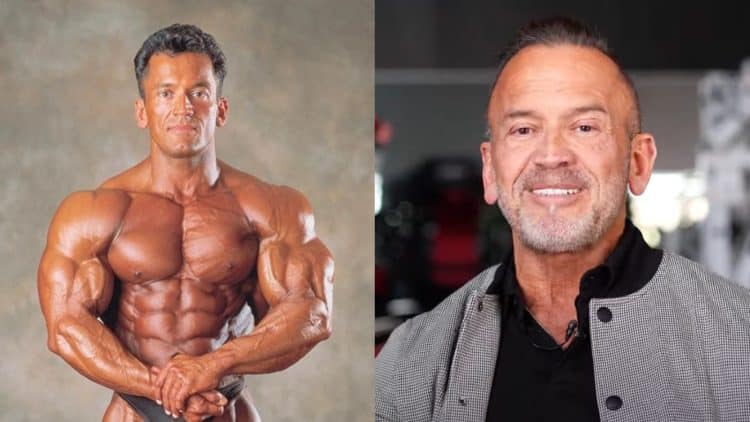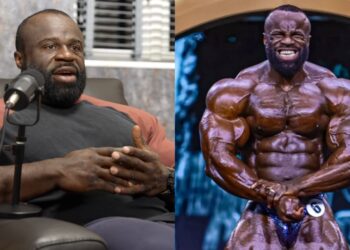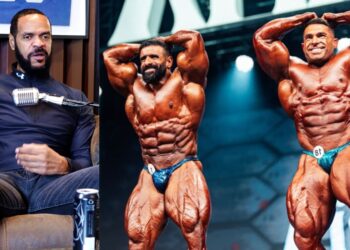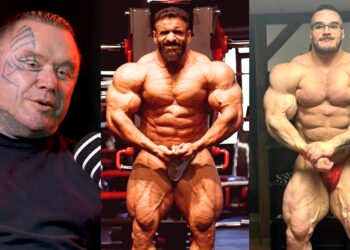Lee Labrada has remained an active voice in bodybuilding since retiring and often shares his tips on training and nutrition. Recently on YouTube, Labrada discussed being outweighed in the prime of his career by 50 pounds, opened up on his contest diet, and named his top bodybuilding inspirations.
Lee Labrada is a renowned bodybuilder whose success in the sport is marked by his remarkable accomplishments in the late 1980s and early 1990s. Labrada, known for his exceptional aesthetics and proportionate physique, competed in numerous bodybuilding competitions, earning him recognition as one of the top athletes of his era.
Despite falling short of winning the coveted Mr. Olympia title, Labrada’s impact on the bodybuilding scene was significant. Lee Labrada pushed athletes such as eight-time Mr. Olympia champion Lee Haney while on the competitive stage. His disciplined training regimen, dedication to nutrition, and commitment to maintaining a balanced and aesthetic physique set him apart.
After retiring, Lee Labrada transitioned into a successful entrepreneur and fitness expert and has played a pivotal role in shaping the fitness industry. Labrada’s dedication to promoting a healthy lifestyle and sharing his wealth of knowledge has contributed to inspiring and guiding new athletes.
Level Up Your Fitness: Join our 💪 strong community in Fitness Volt Newsletter. Get daily inspiration, expert-backed workouts, nutrition tips, the latest in strength sports, and the support you need to reach your goals. Subscribe for free!
Labrada Reflects on Battling Bodybuilders That Outweighed Him By 30-50 Pounds
Since there was no Men’s 212 Bodybuilding division back when he competed, Lee Labrada routinely squared off against adversaries who enjoyed a significant size advantage.
“You have to understand that back then, they didn’t have a 212 division. It was an Open division. So you had anybody that ran from under 200 pounds all the way up to over 250. At no point in my career was I giving away less than a 30-pound advantage to the next guy up.”
He explained that sometimes competitors would outweigh him by a staggering 50 pounds, yet still managed to secure a top-four position at the Olympia for seven years consecutively.
“I was always 30 to 40 to 50 pounds lighter than the guys I was competing with. Because of that, I had to have attention to detail. I could not afford to be two or three pounds out of shape or two or three pounds heavier or not hit a peak perfectly because then I was easily blown away by a bigger guy.”
“It made me really pay attention to all the details. Everything from posing to conditioning to my suit to the way I stood on stage to the tan — I mean I left no stones uncovered.”
Lee Labrada Shares Which Legends Of Bodybuilding Inspired Him During His Career
Lee Labrada gave insight into his bodybuilding career in a recent YouTube video. While opening up, Labrada revealed which bodybuilding greats served as an inspiration.
“I can’t say that there was one men’s professional physique that inspired me the most. I think that there were several. Frank Zane, Franco Columbu, and then even guys like Mike Mentzer that I really don’t have much in common with in terms of physique type but I really liked his no-nonsense approach to training, high-intensity training” Labrada said.
“So that was one of my early influences. Later on, Samir Bannout, who was the 1983 Mr. Olympia. He was a mentor early on for me as well. I got some great inspiration from those physiques also Mohamed Makkawy he was second place at Mr. Olympia one time. Just a great great symmetrical proportionate bodybuilders from back in that golden era.”
Labrada Discusses His Contest Diet and Not Suffering During Preps
Labrada made it clear that he would start his dieting 12-16 weeks before a given contest.
“A process of dieting over a period of 12-16 weeks, they still do it to this day but I will tell you that this concept of extreme suffering is one that is foreign to me. That doesn’t mean that I worked any less hard than the next guy it’s just that my approach to the diet was so systematic and I had it down so perfectly that I could literally cut one or two-hundred calories a day out of my diet precisely.”
“I was able to manipulate and keep my metabolism from slowing down over that period of three months leading up to a show. I think what happens a lot nowadays is that they still do what they did back in my day with what the majority of guys did.”
While many athletes would eyeball food back in his day, Labrada would pride himself on being ‘very precise’ and always utilizing a scientific approach to his preparations.
“They eyeball the amount of food they eat or they only go by the grams and the measurements of the food instead of actually counting the calories and being very precise, keeping that in a day-to-day log and methodically trimming those or even oscillating the calories periodically.”
“I had a very scientific approach and I think that that kept me from that starvation mode. I will tell you in the same breath that I had periods where I dieted down so hard that it was – it was very very tough. I remember almost blacking out a couple of times.”
“I was always able to handle it mentally and I was always very scientifically rigorous in my approach. The training style I found that works best all around is a high-intensity training style.”
Lee Labrada’s son Hunter Labrada now follows in his footsteps as a successful competitive bodybuilder. Having recently taken sixth place at the 2023 Mr. Olympia, Hunter Labrada has proven to mirror his father’s commitment to the sport. While Lee Labrada doesn’t train his son, he supports and advises him, showing a vested interest in his success.
Considering Lee Labrada’s legacy and willingness to go toe-to-toe with contenders who outweighed him by 50 pounds, he remains one of the most celebrated figures the sport has seen, who still sports impressive longevity today.
RELATED: Lee Labrada Shares His 4 Ultimate Tips to Shred Stubborn Belly Fat for Killer Abs









